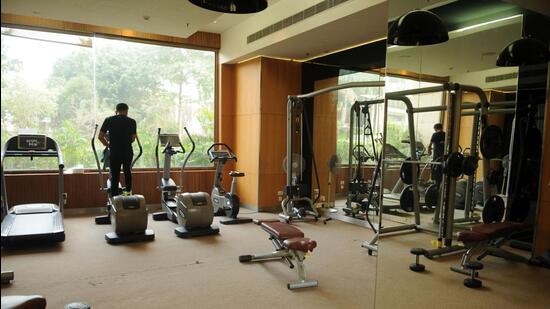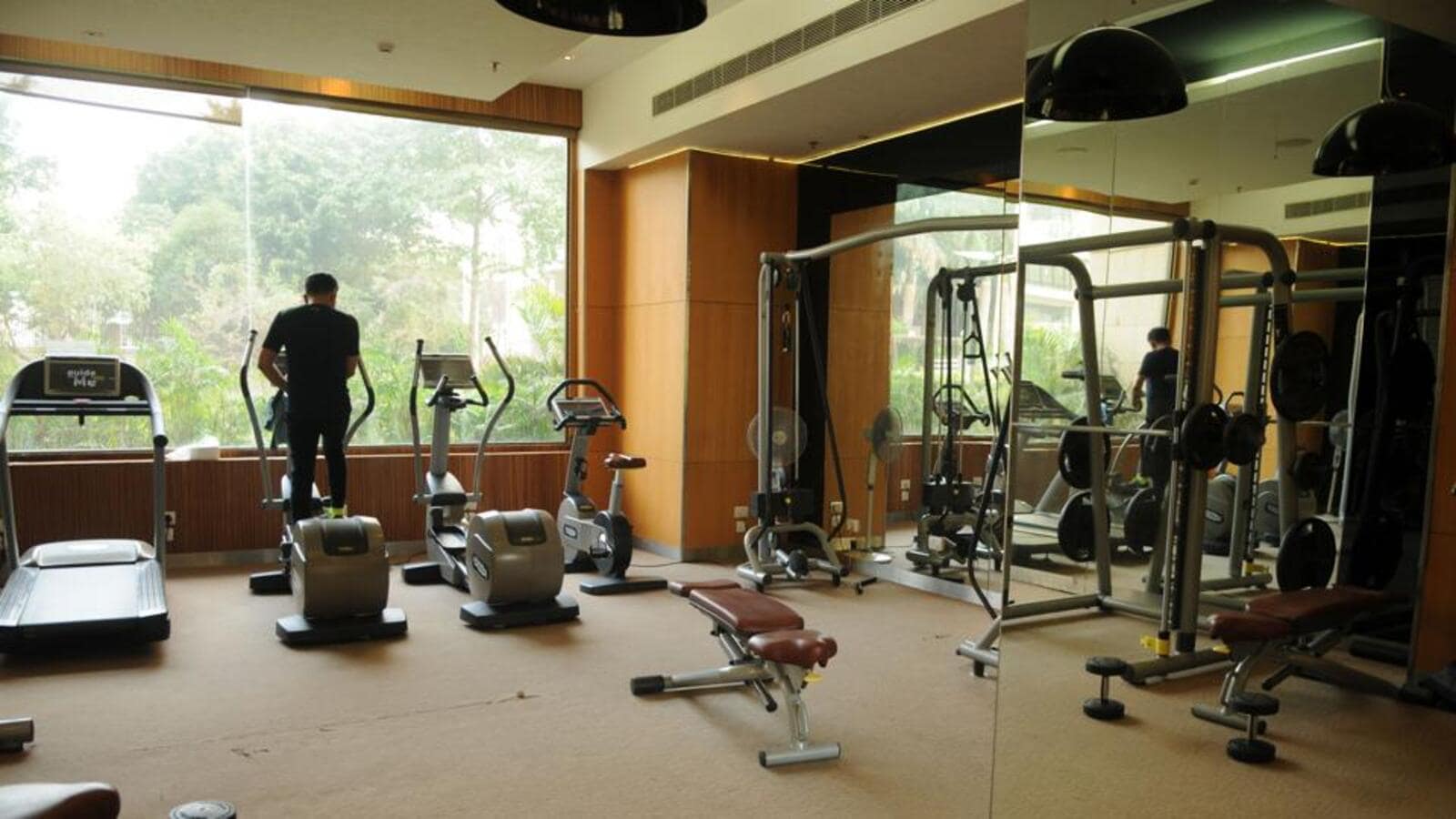Mumbai: Developers will soon be incentivised to build larger fitness or yoga centres in residential buildings, with the Brihanmumbai Municipal Corporation (BMC) proposing to double the FSI-free space for such facilities from 2% to 4% of the total built-up area. For this purpose, the Development Control Promotional Regulations (DCPR) 2034 will be amended soon, officials said.
 Gurugram, India-February 29: Gym for residents Hibiscus Avenue a residential condominium located at sector-50 near Nirvana country, in Gurugram, India, on Saturday, 29 February 2020. (Photo by Parveen Kumar/Hindustan Times)(Pic to go with S Munsi�s condo profile column for Saturday to Sunday)
Gurugram, India-February 29: Gym for residents Hibiscus Avenue a residential condominium located at sector-50 near Nirvana country, in Gurugram, India, on Saturday, 29 February 2020. (Photo by Parveen Kumar/Hindustan Times)(Pic to go with S Munsi�s condo profile column for Saturday to Sunday)
Currently, as per DCPR regulations, residential buildings are allowed to have a fitness centre up to 2% of the total built-up area that is free of FSI or floor space index. FSI is the ratio between the built-up area and the plot area.
Following requests from architects, builders, and citizens, the BMC has decided to amend the regulations and incentivise developers to build larger fitness centres that will be free of FSI. It has invited suggestions and objections from stakeholders to the proposed rule change.
Sunil Rathod, chief engineer from the BMC’s development plan department, said, “There was a demand from architects, builders and even the general public to have larger gyms or fitness centres. Earlier, we allowed 2% of the total area (to be FSI-free), and now it will be 4%.”
He added, “If a complex has an area of 100,000 square metres, earlier, the builder used to include a fitness centre of 2,000 square metres. Now, they can increase it to 4,000 square metres. Earlier, fitness centres were smaller and could be used by seven to eight people at a time. Now, they can be used by more people.”
Another BMC officer said that most buildings have no space for yoga classes. As a result, people hold these classes in the refuge area of the building, which is supposed to be empty.
To implement this proposal, the BMC will have to get regulations 31 (1) (xvii) and 37 (28) of the DCPR amended by the state government. The notification also says that the centre shall not be used for any purpose other than fitness, yoga, meditation or recreational activities.
Manoj Daisaria, town planner and former president of the Practising Engineers, Architects and Town Planners Association, said, “Health and fitness have become essential in today’s busy lifestyle. It’s going to be a big asset to have a well-maintained fitness centre in any society. 4% additional built-up area proposed for a fitness centre will enhance the quality of living style in housing complexes. The minimum mandatory area recommended is 30 square metres, free of FSI, so that basic essential equipment can be provided within the area.”
